I have travelled extensively across Switzerland, by every means possible (foot, train, tram, bus, ferry, cogwheel railway, aerial cable car, and funicular).
Until recently, though, one spectacular ride eluded me: the Stoosbahn, the world’s steepest funicular, connecting Schwyz with the car-free mountain village of Stoos, 1,300 metres above sea level.
NB Although Stoos is officially car-free, there are motorised taxi services and working vehicles.
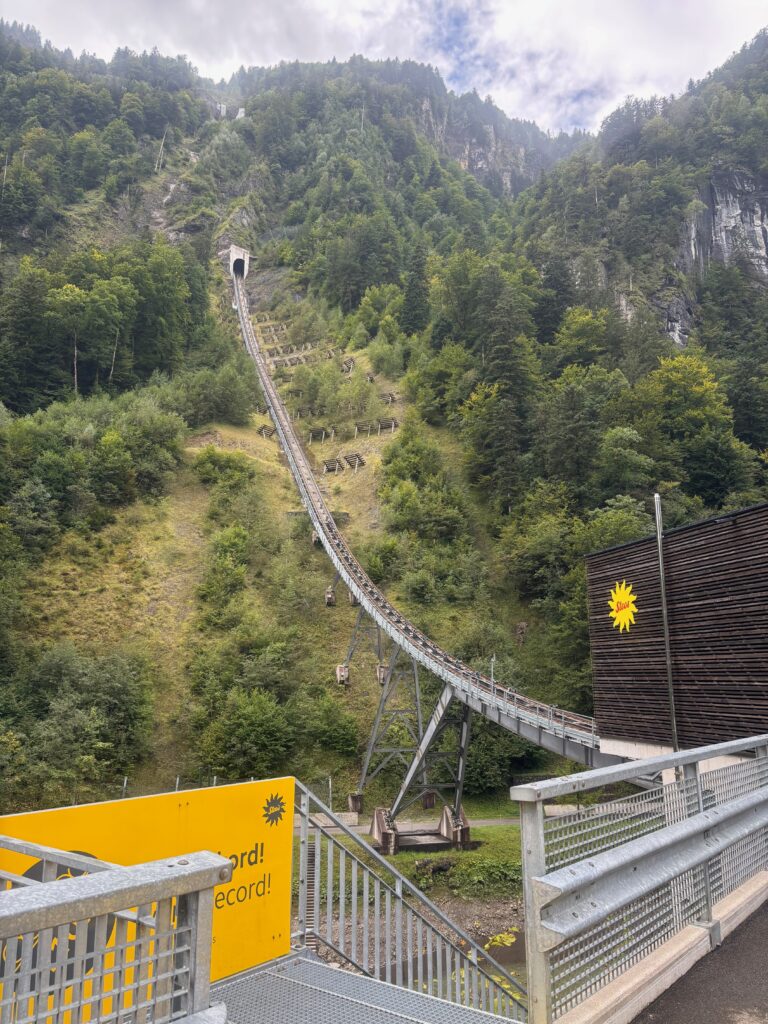
The Stoosbahn achieves gradients up to 110% (about 47 degrees), taking passengers up 744 metres of elevation over a 1,740-metre track in about minutes. This new line, opened in December 2017, replaced a system that had operated since 1933. (The old route with red cars, began at a station roughly 300 metres west of the current valley station, closer to the Muota river. The upper station was further from the current one in the heart of Stoos village).
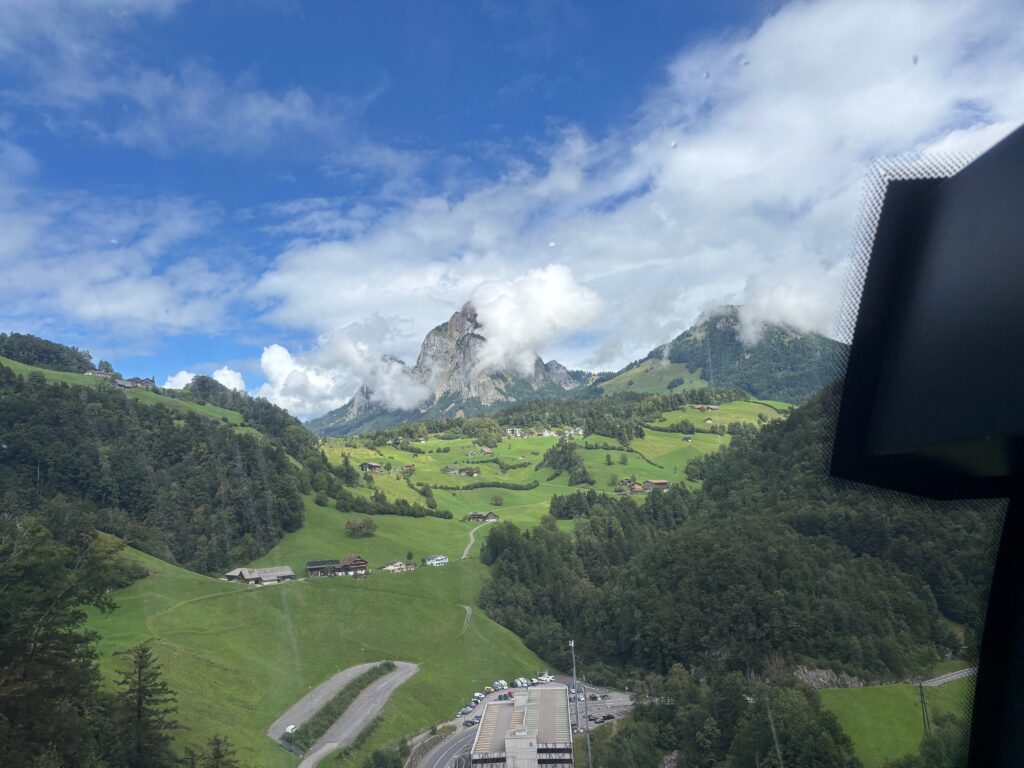
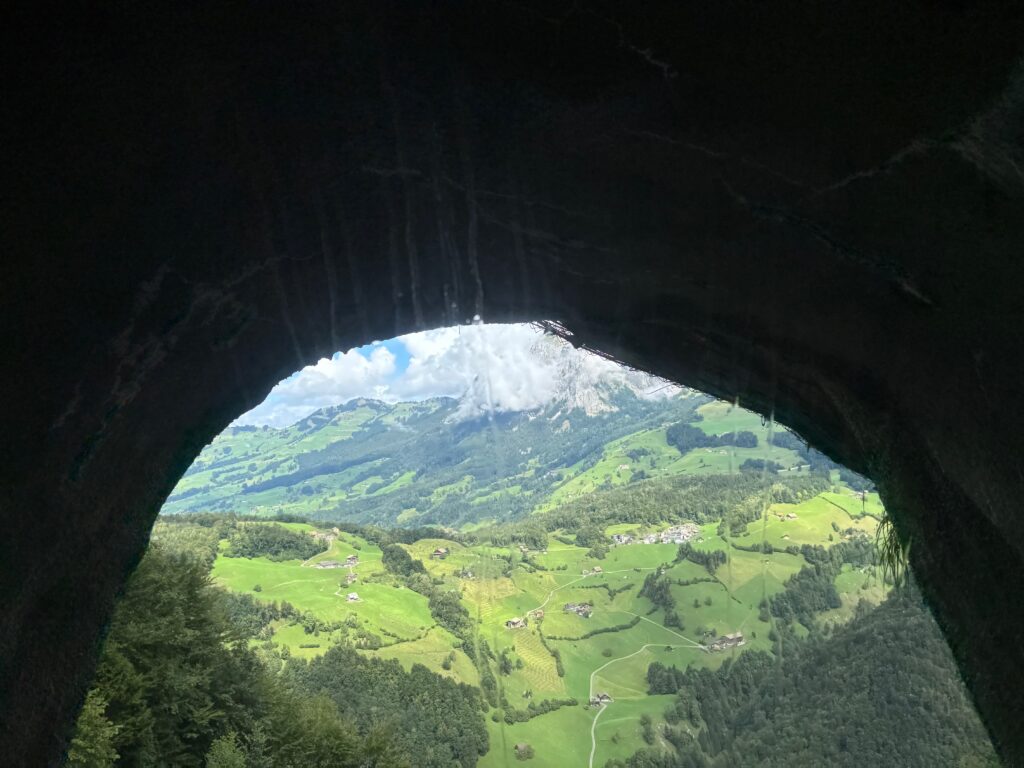
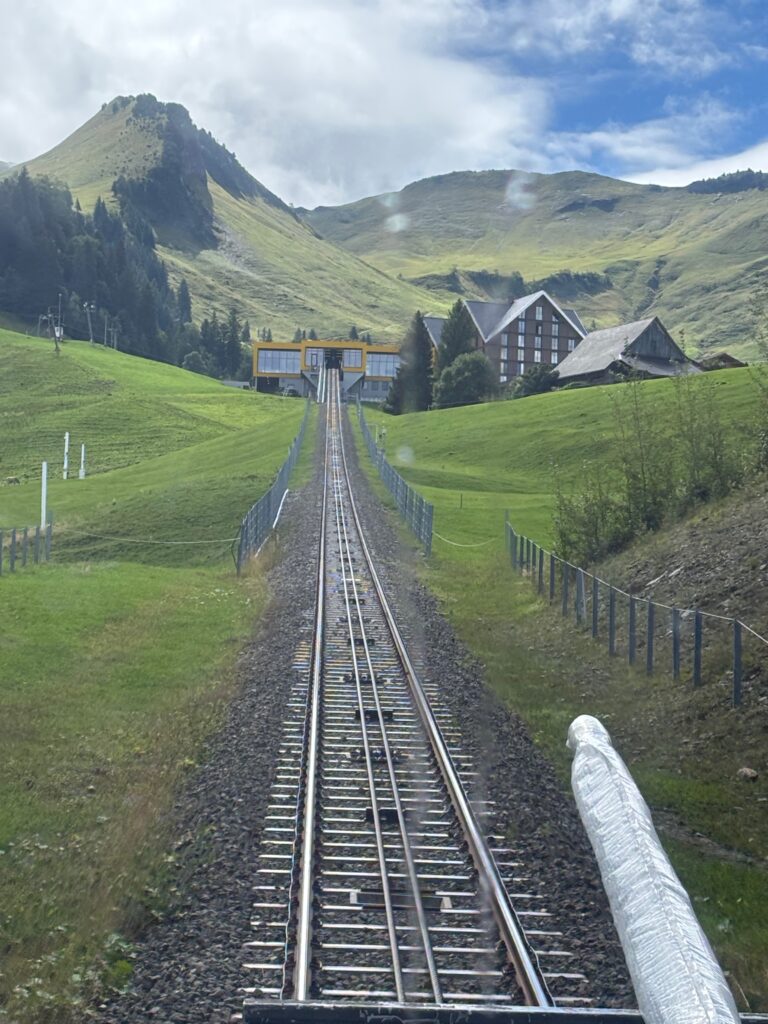
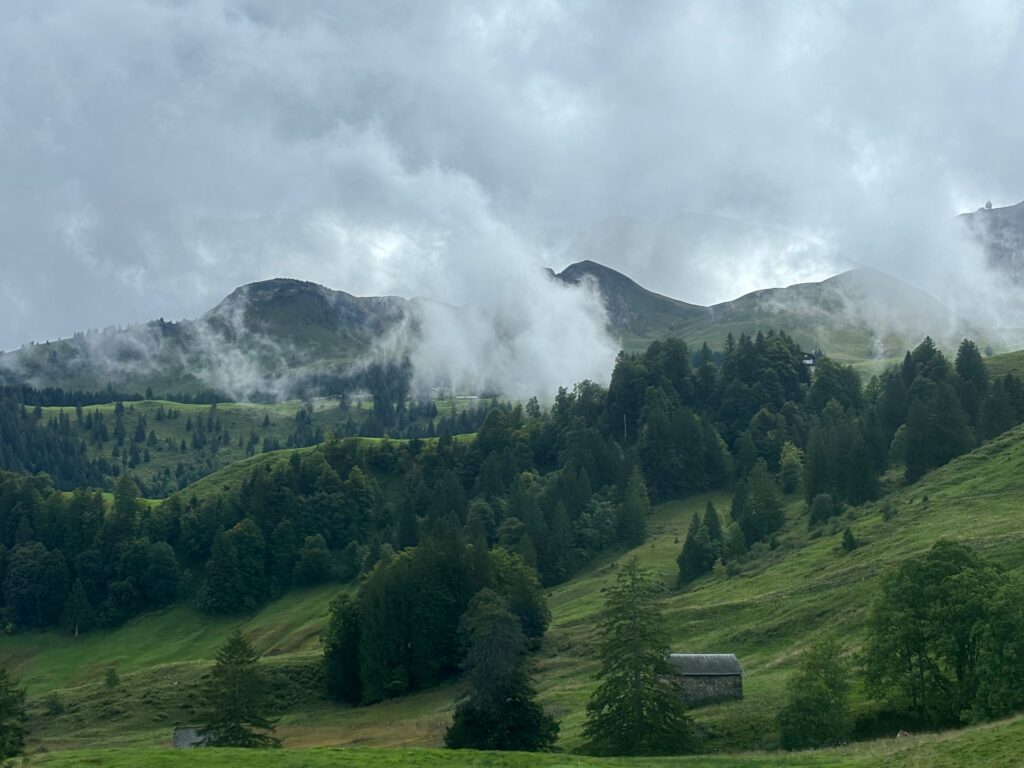
Getting There
Schwyz is about 59 km south of Zurich.
I took an SBB train From Zurich to Schwyz, with a change at Arth-Goldau. Buses connect Schwyz train station to the Stoosbahn base very regularly. You can also easily come from Geneva and Lucerne. As usual in Switzerland, everything connected smoothly, was well signposted, comfortable, clean and efficient.
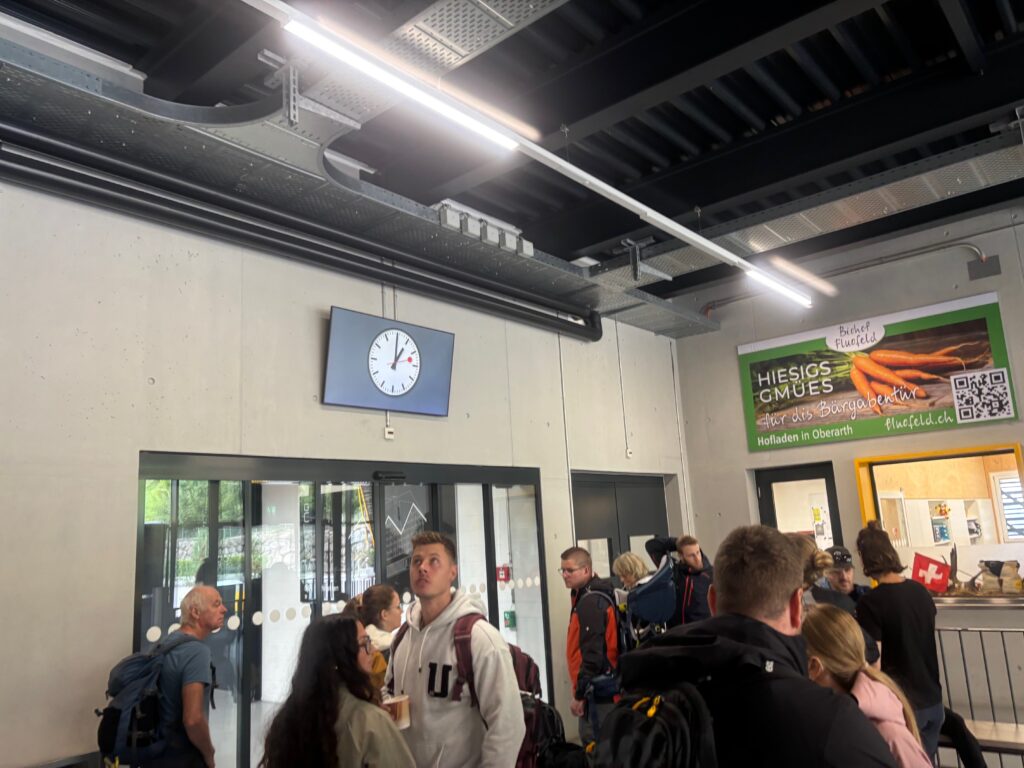
There’s also a large car park at the lower station for people driving to the railway. Clean and free public toilets are available at the bottom and top stations.
Enjoying the Ride
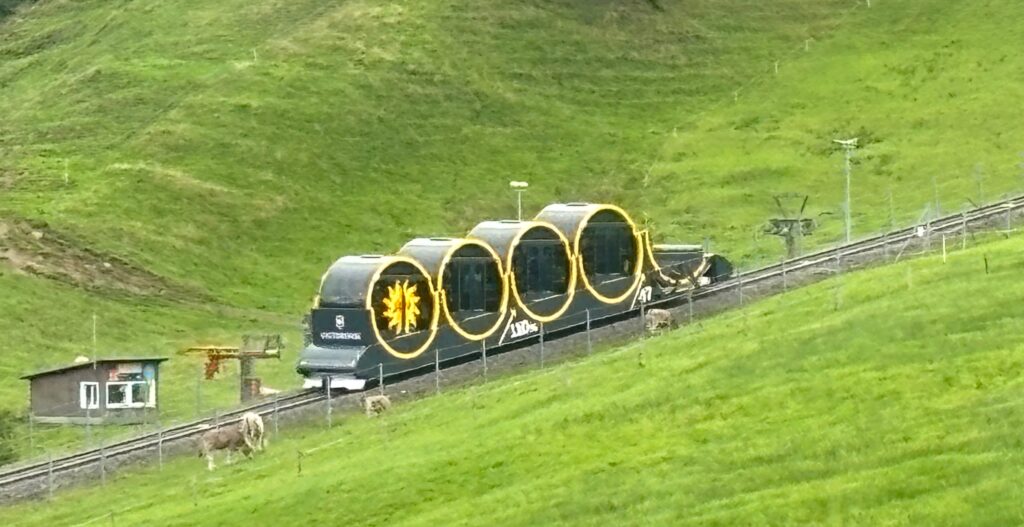
Each Stoosbahn train consists of four bright yellow, barrel-shaped, self-leveling cabins—each holding up to 34 people (seats plus standing), so 136 per train. There are benches for four in every cabin, and panoramic windows for the views. At the front, there was a flat freight wagon, which can be loaded with skis, bicycles, boxes, and supplies for the village. Its an efficient solution for Stoos’s car-free status.
The driver operated the train from a sleek little panel at the front. We departed smoothly.
After leaving the valley station, we began climbing immediately. The ride was gentle and quiet. The train crossed a bridge , passed through some forest and , then quickly entered the Zingelfluh tunnel (245 m long).
We then passed through the very steepest section which offered spectacular lake and mountain views., continued through the very short Ober Zingeli tunnel (80 m), and finally went through the Stoosfluh tunnel (223 m) just before arriving at the upper station in Stoos village.
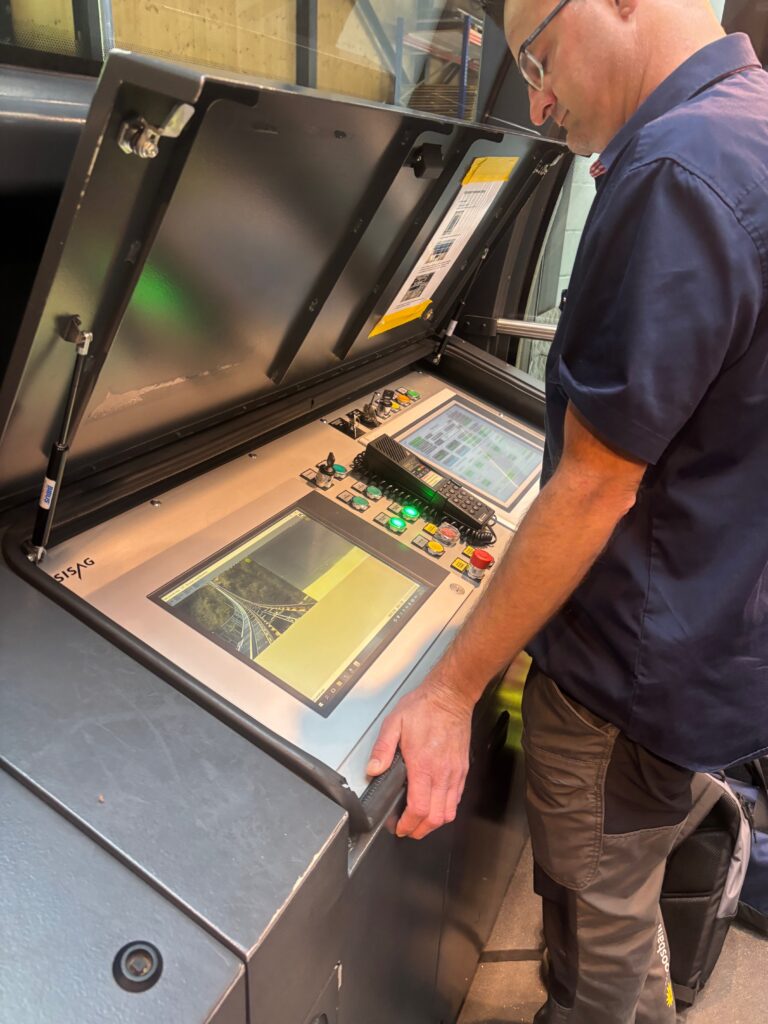
As the gradient became dramatic, I remained standing comfortably upright—thanks to the brilliant self-leveling design. It’s a unique sensation: the engineering alone is worth the ticket.
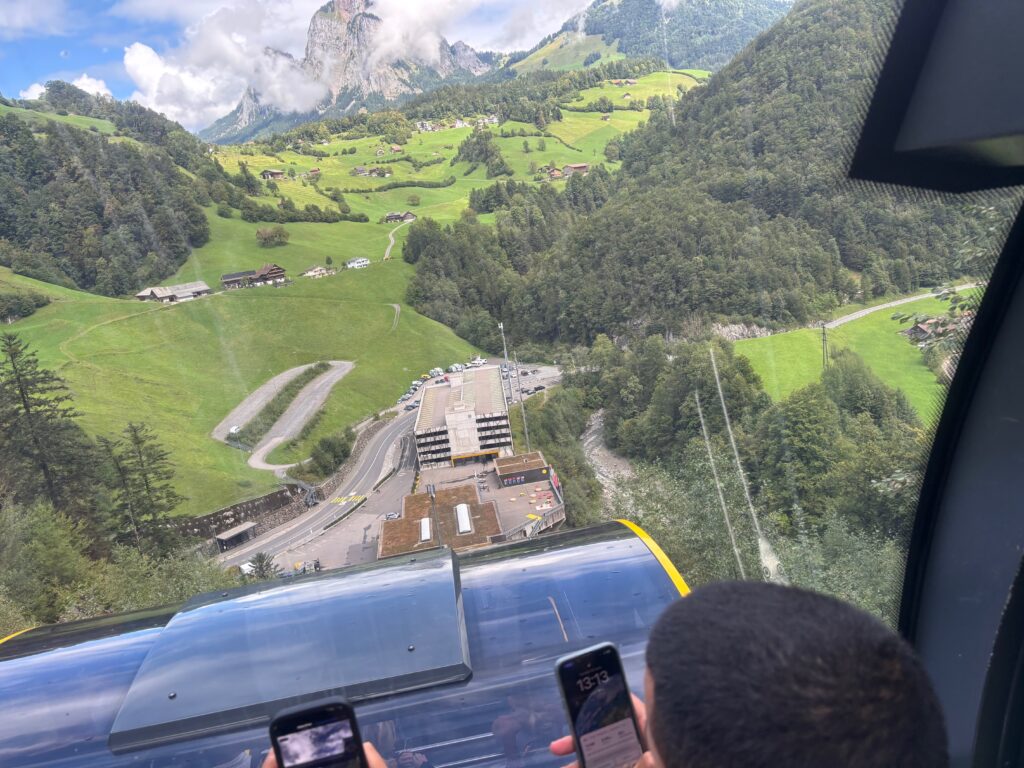
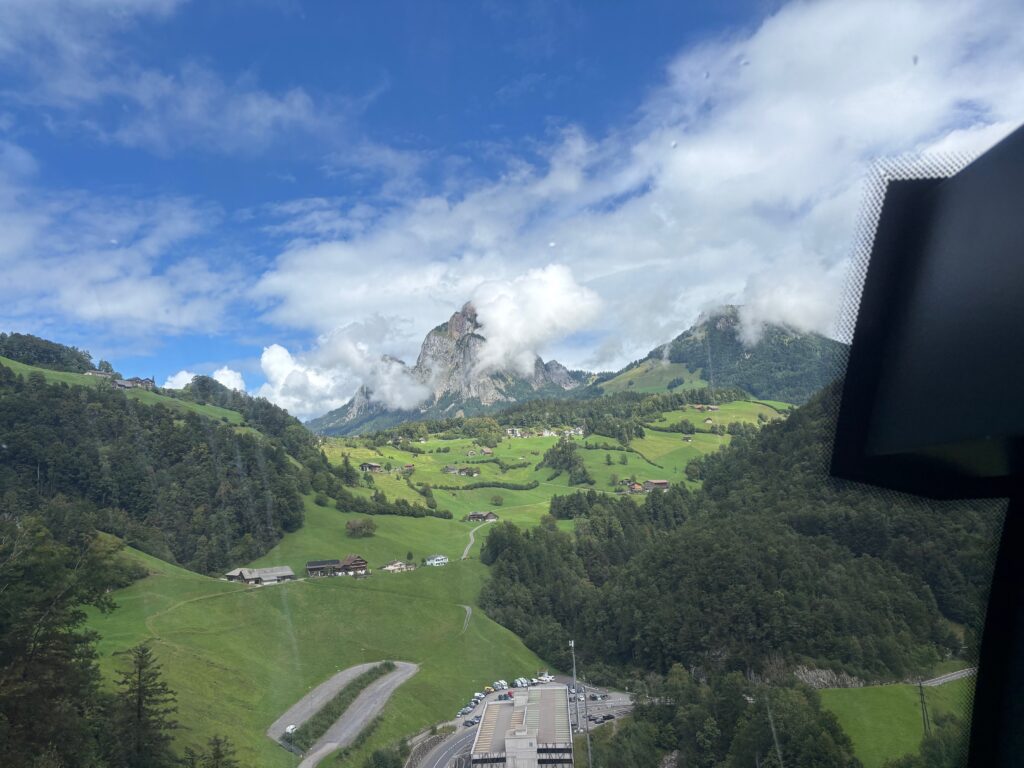
The total length of all three tunnels on the route is nearly 600 metres, making them a prominent part of the 1,740-metre-long journey. They were all cut for this new line through bands of solid rock . The construction of these tunnels was a core challenge, as they had t be perfectly straight, designed for the modern, barrel-shaped cabins to remain level and built in very steep conditions!
Exploring at the Top
As I exited the Stoosbahn funicular, I found myself in the heart of the village.
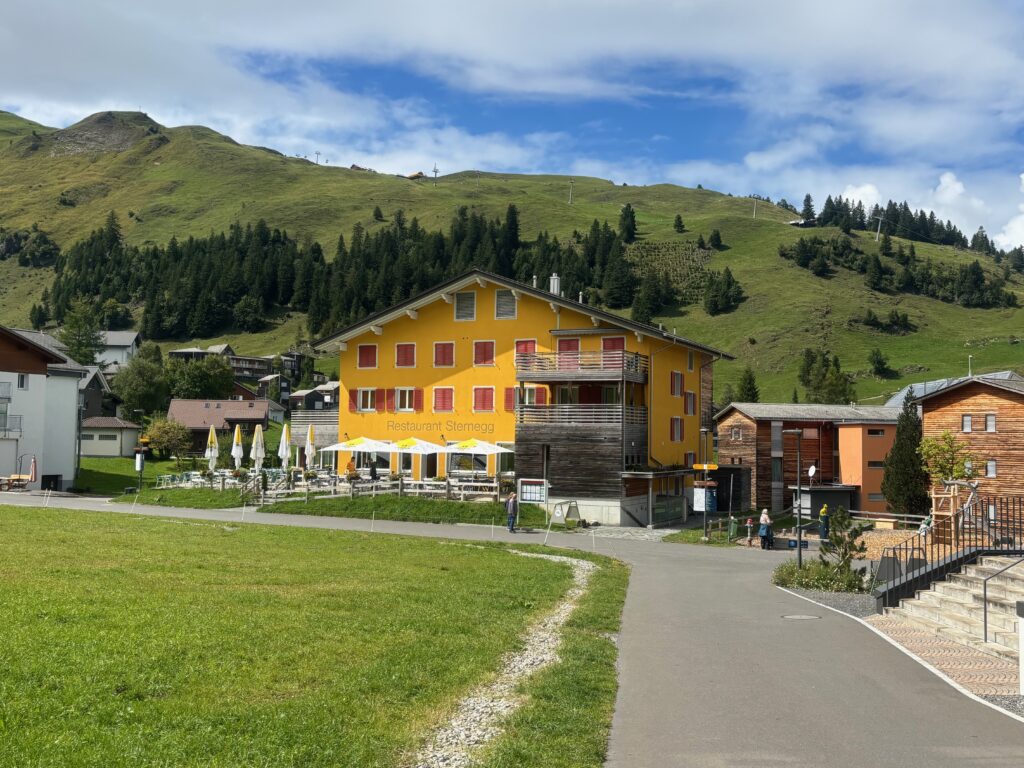
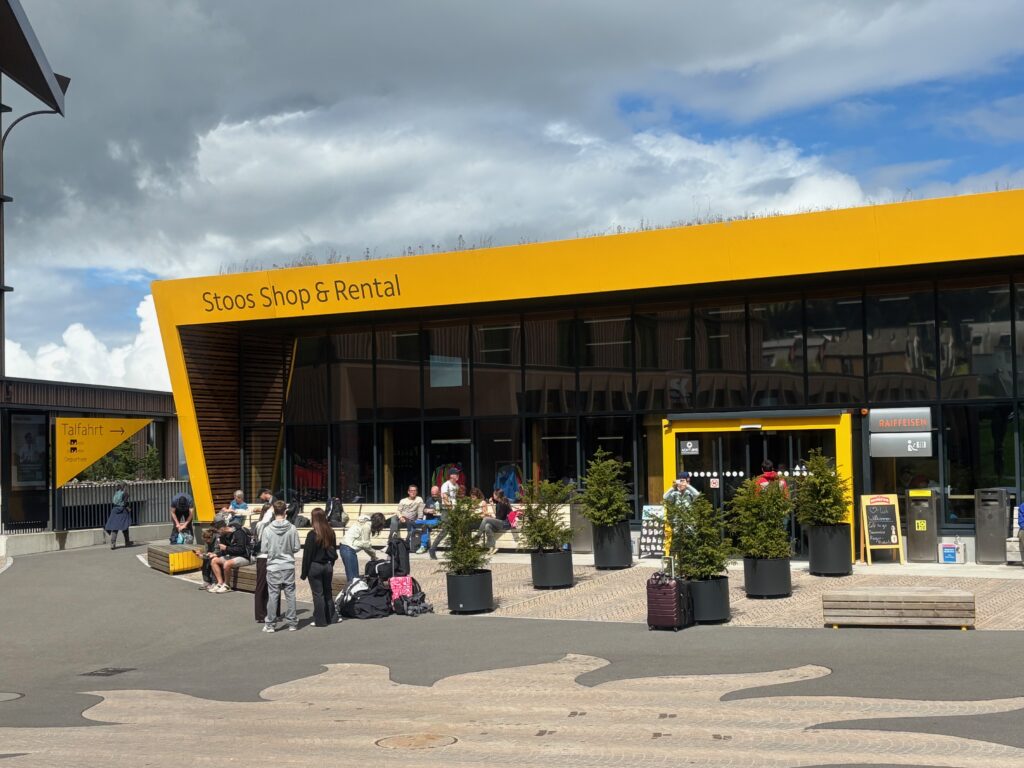
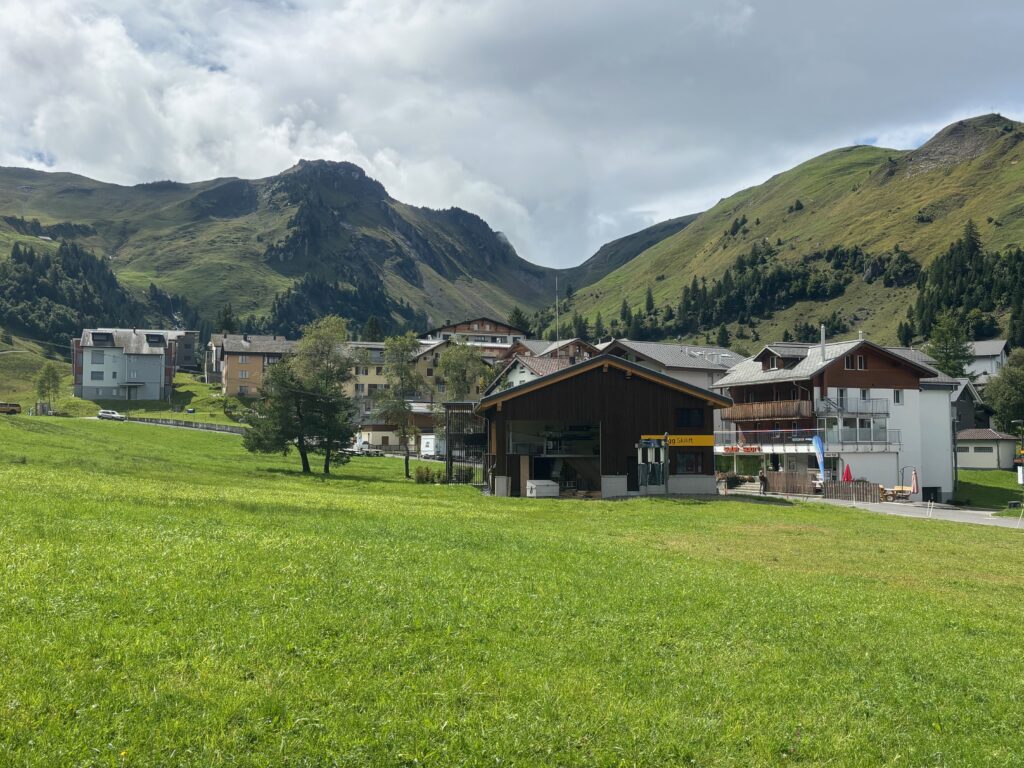
The main pathway leads directly to hotels, cafés, the tourism office, and a small grocery shop. The permanent population of Stoos is around 150 residents. Despite its tiny size, Stoos boasts over 2,200 guest beds in various hotels, lodges, apartments, and chalets, reflecting its strong focus on winter and summer tourism. Several wellness hotels provide their guests and day visitors with saunas and pools, or spa treatments. It has several restaurants and cafes, most offering spectacular views with your meal. Prices are classic Swiss eye-watering. Booking is highly recommended if you want to eat at a particular restaurant.
There are a few interesting art pieces scattered around the village, which were enjoyable to discover.
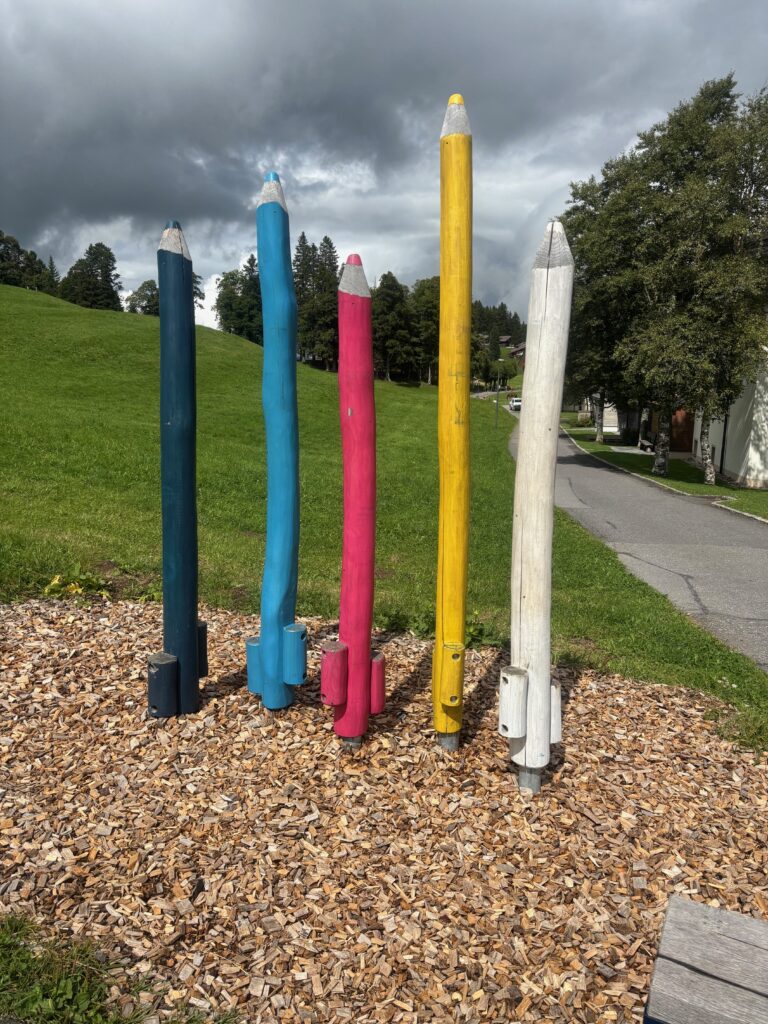
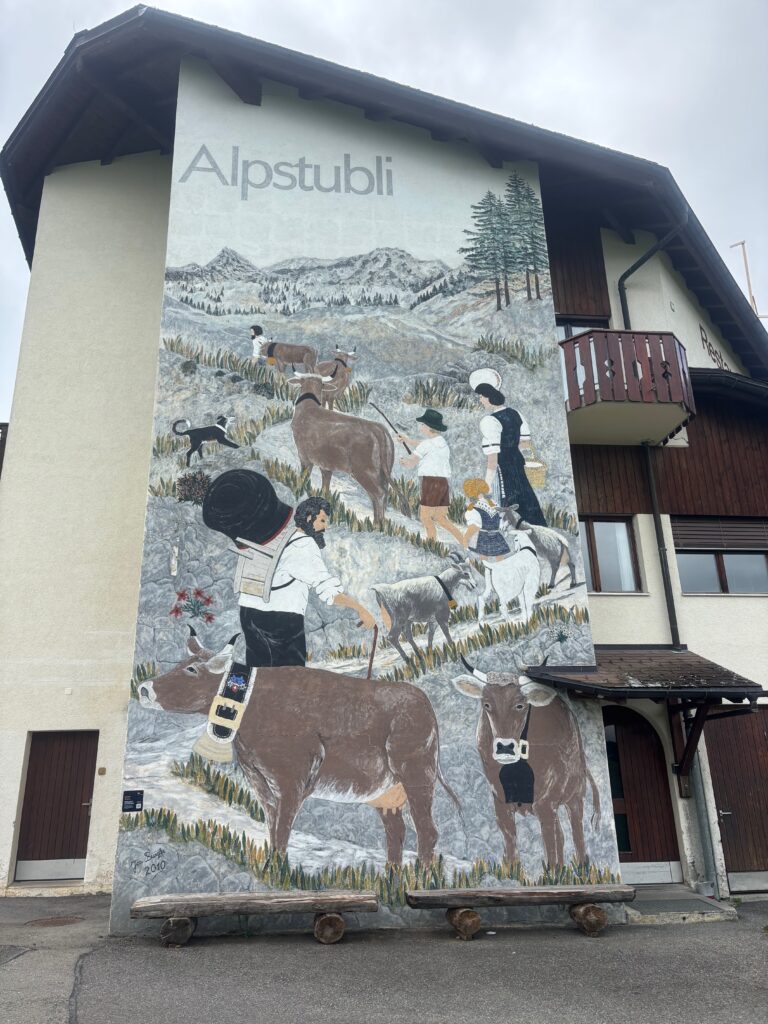
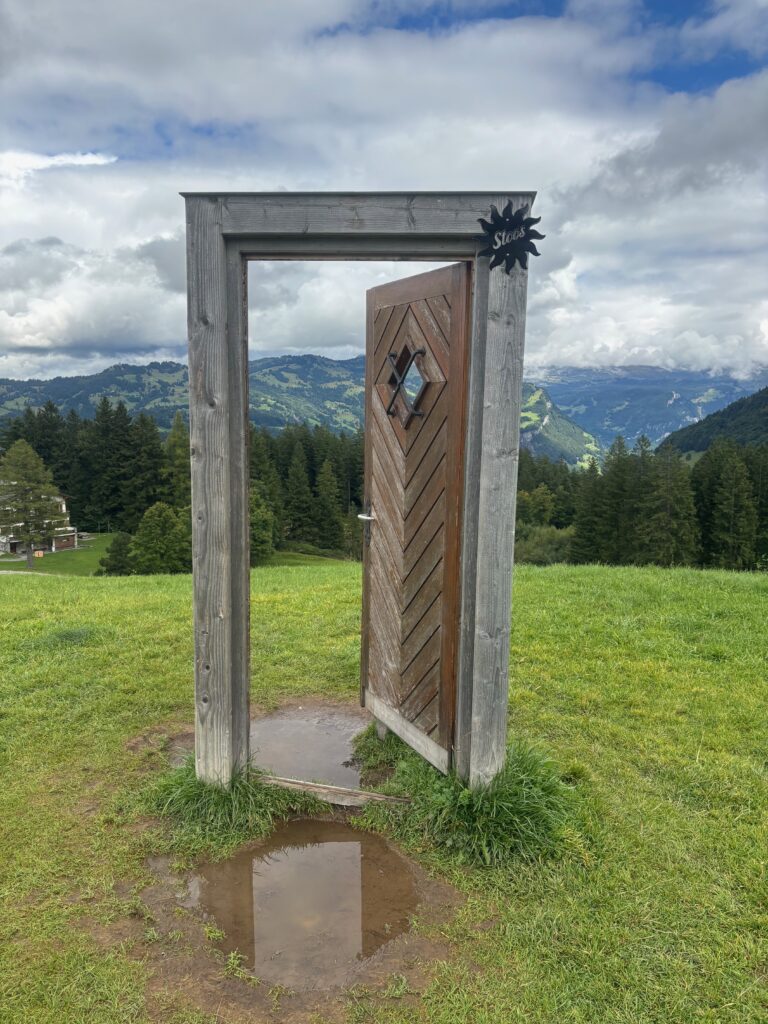
.
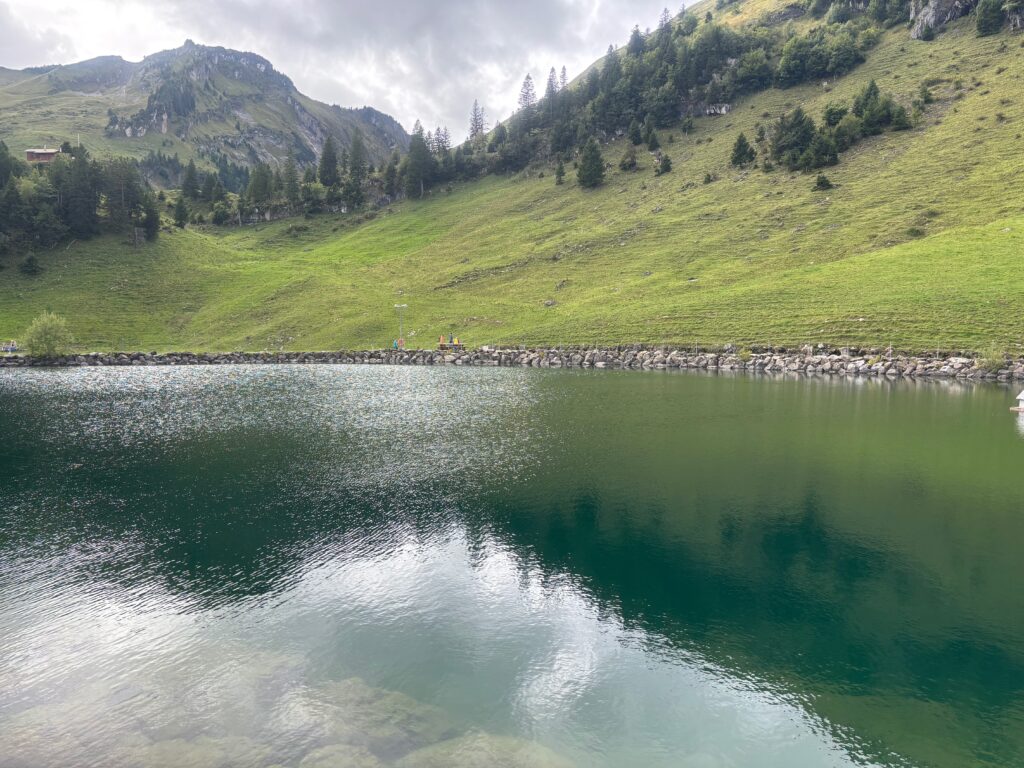
The village has Little Stoos Lake, which is popular for lakeside strolls, picnics, and summer fishing.
While I was there, a young kid reeled in quite a sizeable fish with a bit of work and much encouragement from bystanders. The smiles on the face of he and his grandparents were very infectious.
The Stoos church also stood out. It was built in the mid-20th century. I foiund its simple alpine furniture was very peaceful and welcoming, and views from the church front door are stunning.
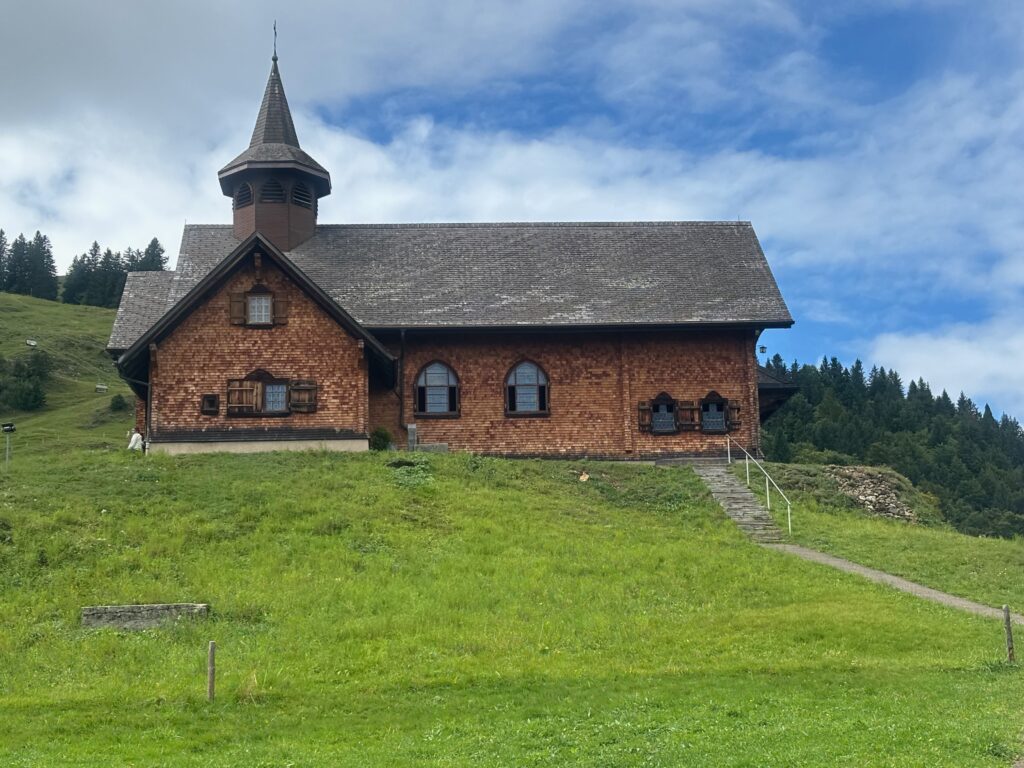
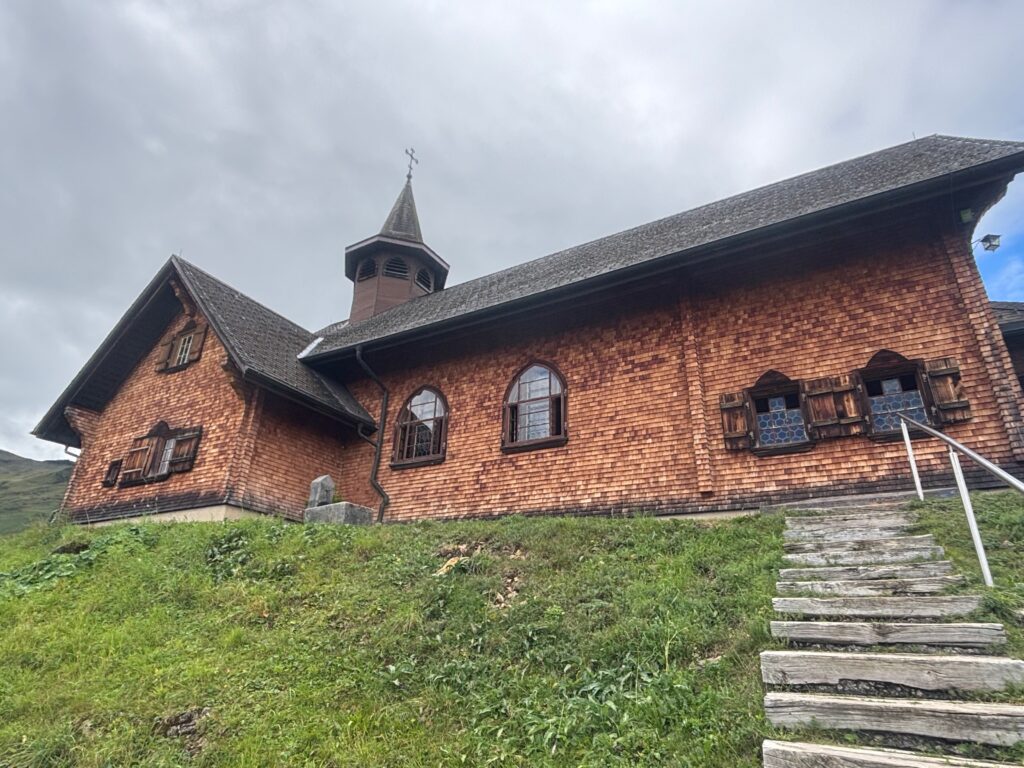
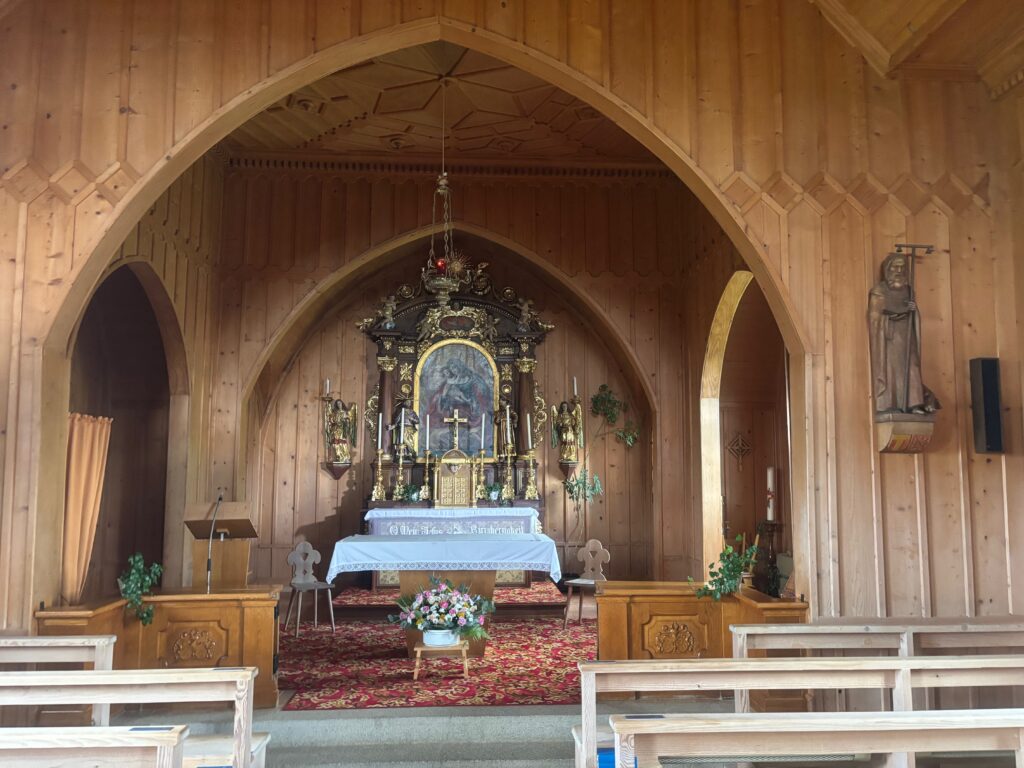
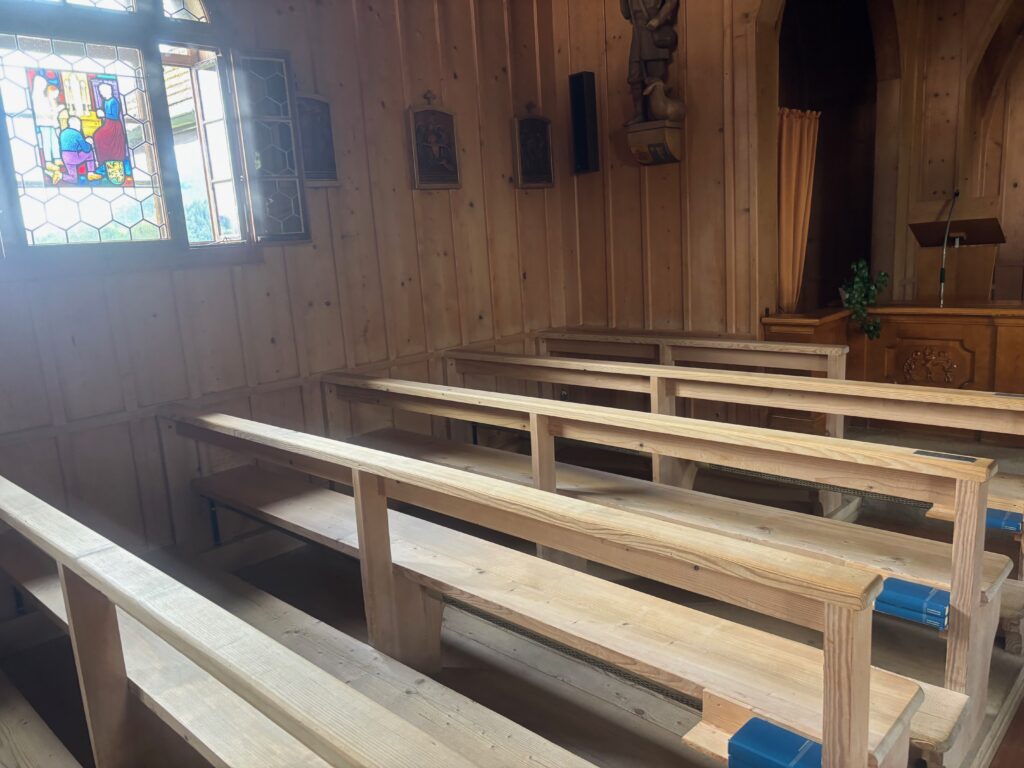
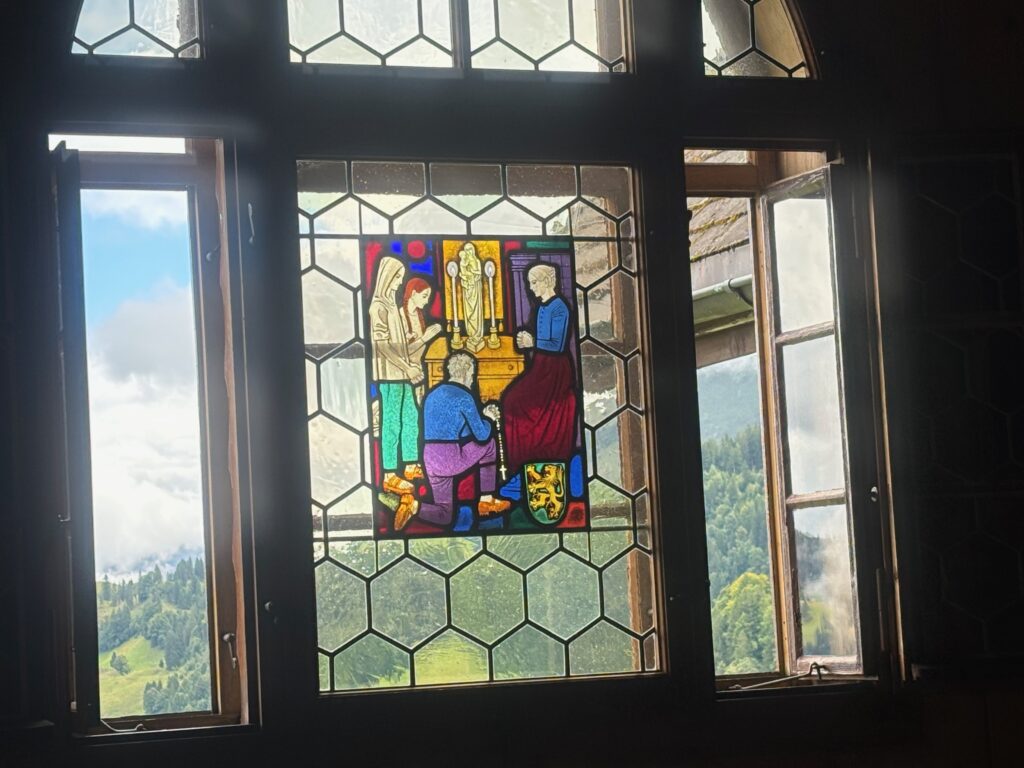
I was drawn to the famous Klingenstock–Fronalpstock ridge hike, which is about 4 km with incredible panoramic views over 12 lakes and countless peaks. The stations for the chairlifts to Fronalpstock and Klingenstock are a short walk from central Stoos (less than 10 minutes). It’s a must for hikers. I walked accompanied by the sound of the clanging bells around the necks of grazing cows on these steep hillsides. The paths were quite busy with a mixture of very well equipped locals and clearly unprepared tourists wearing very unsuitable footwear. I passed one woman tottering on high heels!
The Downward Journey
For different scenery, I walked to the cable car stop in Stoos and floated down to Morschach—with more fantastic views. There is a bus service from the
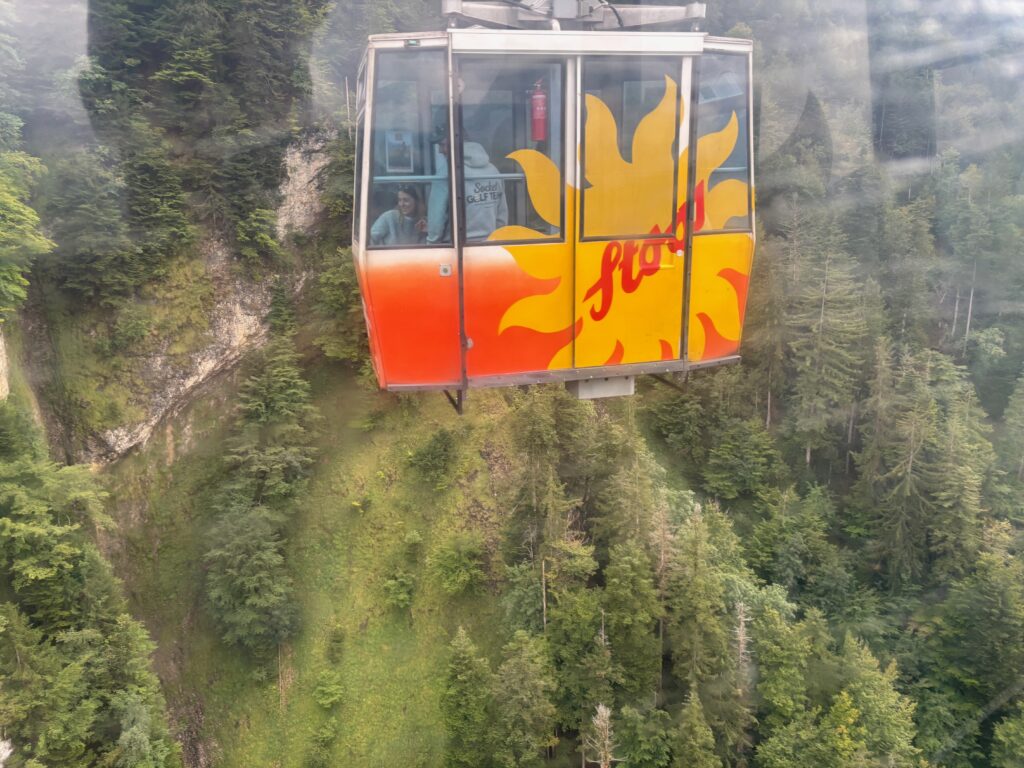
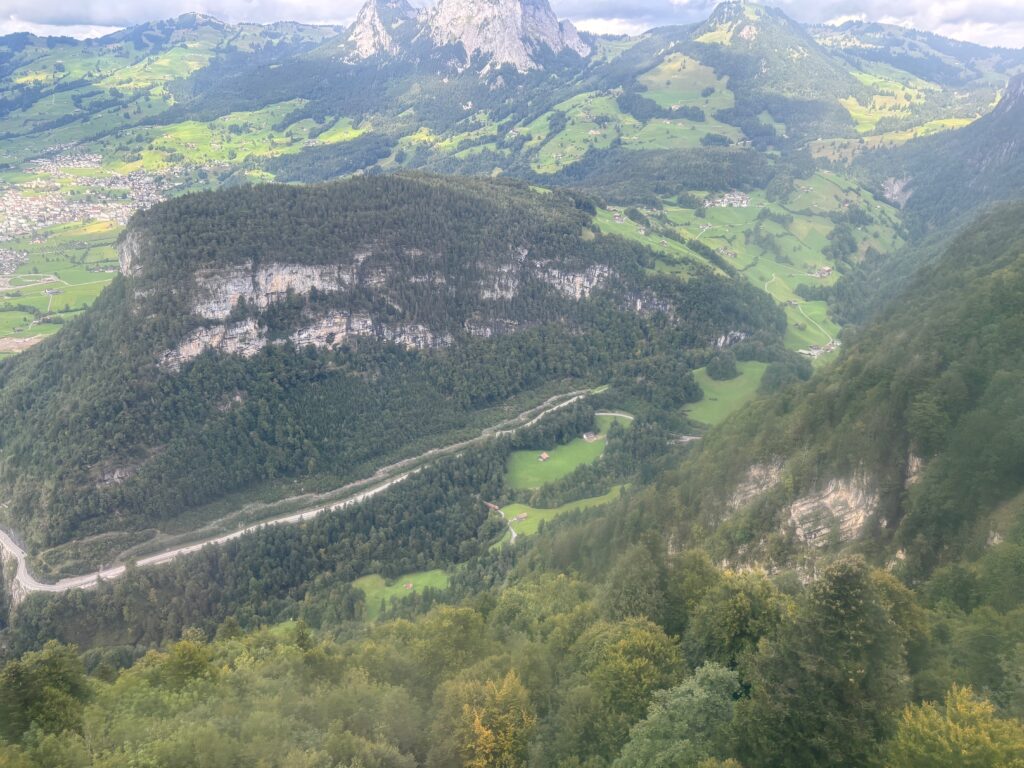
Tickets and Passes
I got my tickets online. They can easily be bought at the station but I highly recommend booking ahead, especially on weekends. I was please to find that the funicular was included in my Swiss Day Pass, saving me the 23 Swiss francs for a round trip. The Stoosbahn is also included with the 3, 4 or 8 Swiss Travel Pass and the GA Travelcard (the national all-line pass only for Swiss residents). For hiking or skiing, chairlift tickets are bought separately at the valley station or online.
In Conclusion
I had a terrific day. This is one of the most spectacular railway journeys in Switzerland, and highly recommended for both the ride and the activities on the plateau. My next mountain trip in Switzerland needs to be the Gelmerbahn an Open-air funicular not far from Interlaken, Switzerland, 106% (45°); famous for its exposed ascent and mountain lake views.
My stable of steepest trains and mountain railways that I have ridden now includes
- Katoomba Scenic Railway: A short incline railway, originally for mining in Australia’s Blue Mountains, 128% (52°).
- Pilatusbahn: Rack railway on Mount Pilatus, Switzerland, 48%; the steepest rack railway worldwide, with unique technology and dramatic alpine scenery.
- Mount Washington Cog Railway: America’s oldest mountain cog railway in New Hampshire, USA, 37%; climbs to the summit of Mount Washington with historic locomotives.
- Duquesne Incline: Incline railway in Pittsburgh, USA, 58%; carries locals and tourists up Mount Washington for iconic panoramic city vistas.
- Snowdon Mountain Railway: Rack railway in Wales, 18.2%; climbs to the highest peak in Wales and is the only public rack railway in Britain
- Funicular dos Guindais: Urban funicular in Porto, Portugal, 61%; connecting the Ribeira riverbank to the upper city with a short, steep ride through historic neighborhoods.
I also have ridden the Gloria funicular in Lisbon that had the accident last week and want to acknowledge the tragic loss of life
Related Posts


Leave a Reply